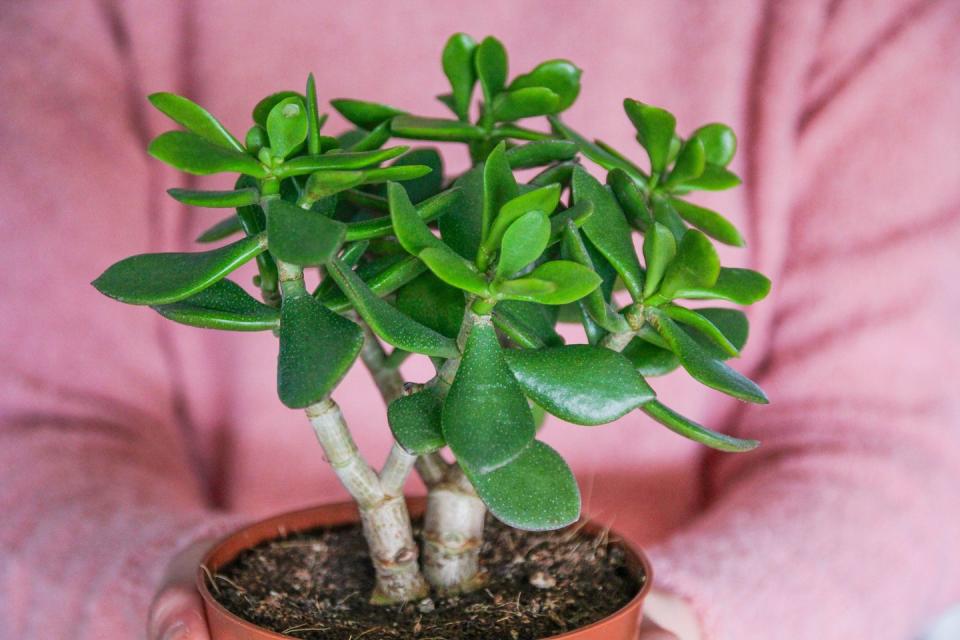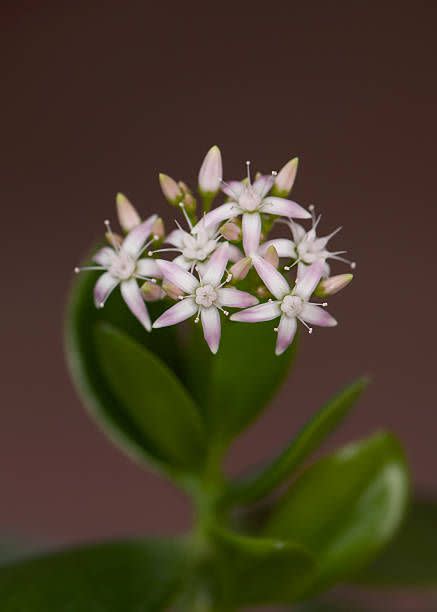Here's How to Care for Low-Maintenance Jade Plants

Succulents have been having a huge moment for the past few years. And it’s no wonder because they come in so many different sizes, colors, and forms, so there’s something for every houseplant lover! If you’re looking for a succulent with a fun, distinctive shape like a little tree, jade plant, also known by its botanical name Crassula ovata, is the plant for you. Originally from South Africa, these succulents were one of the earliest houseplants introduced to Europe.
Jade plants have shiny round, oval, or tubular-shaped leaves that may be coppery green, purple edged, or variegated. Outdoors, jade plants are a shrub that tops out at a few feet tall in the desert southwest or southern Florida. Otherwise, they’re awesome house plants that don’t need babied. One word of caution: These plants are toxic to pets, so if you have a nibbler in your house, keep the plants up high or choose a different houseplant.
Here’s everything you need to know about jade plant.
How do I care for my jade plant?
Jade plants don’t mind being root-bound, so don’t worry about transplanting into a bigger pot when you first bring it home. It’s a very, very slow grower, so the size you purchase is the size you’ll have for many years. Give jade plants bright filtered light year-round, preferably in a south-facing window. An LED grow light is another option if your rooms are too dark or you don’t have any sunny windows. In the summer, jade plants can be moved outdoors into a mostly shady spot, but don’t forget to bring them in before nighttime temperatures drop into the 50s.
How do I water my jade plant?

Jade plants are perfect if you’re, ahem, a forgetful plant parent because they don’t mind dry soil. Their thick leaves and stout branches act as water reservoirs so they can hang on for two or more weeks without water. However, it’s best not to let them get too, too dry because they’ll drop leaves or branches or get brown spots on leaves. Instead, let them get mostly dry between waterings. Overwatering leads to mushy leaves, and it’s the most common reason jade plants die.
If you can’t tell if your jade plant needs watered, stick your finger or a chopstick into the soil; if tiny bits of soil cling, it’s still damp and you can wait a few more days to recheck. Also, make sure the pot has drainage holes and don’t let water sit in the saucer beneath the pot. Jade plants—actually, most houseplants—can’t stand wet feet.
You can feed your jade plant. Or not.
You can feed your jade plant, but it’s not entirely necessary. If you do choose to fertilize, use a balanced fertilizer at half the strength recommended on the package. Feed every two weeks from spring to fall, but don’t feed in the winter, when plants typically are dormant.
Do jade plants get bugs?
The most common pest is mealybugs that look like white masses of cotton attached to the leaves. Use a cotton swab with rubbing alcohol to rub them off one by one.

Do jade plants flower?
It’s not that common but jade plants, especially ones that are more than 10 years old, may flower in winter. They’re small white or pink clusters at the tips of branches.
You can make new baby jade plants.
If your plant is lopsided, it’s fine to trim off a stem and put it into a glass of water until it shows roots. Or you can simply stick the stem directly in moist potting mix. Remove any leaves that would be below the soil line before pushing it into potting mix. It’s also possible to propagate a new plant by pulling off a leaf and sticking it stem side down into soil. However, that will take a very long time! But if you’re patient, a teeny jade plant eventually will appear at the base of the leaf.
You Might Also Like

